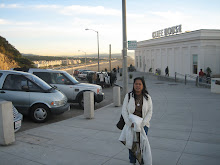
Positioners as a routine finish in full treatment orthodontics
In our office, the goal of comprehensive treatment is to not only align the teeth and achieve correct dental function, but to achieve a coordination between the function of the teeth and the jaw joint. Our functional goal, with respect to the dentition, is a mutually protected occlusion. Because this includes posterior disclusion in protrusive excursions and cuspid guidance, a fully interdigitated Class I occlusion in Centric Relation is essential. Otherwise, a full seating of the condyle in CR will lead to a slight openbite Class II bite, and render a mutually protected occlusion impossible.
Because patients begin to function in their maximum intercuspal position as soon as the dentition is well aligned, it becomes impossible to make the fractions of a millimeter changes that are necessary to settle the teeth into a proper bite while maintaining a Centric Relation condylar position. Therefore, we do not consider a patient finished until having undergone a positioner wear regimen.
Our typical deband sequence is as follows:
1) Patient appears “done,” in that the teeth occlude in a manner meeting Andrews’ six keys of optimal occlusion, including a solid Class I canine relationship. (Note that we do not use the positioner to do any of the work that should be accomplished with the braces themselves.) The patient is scheduled for the next 4 appointments.
2) Molar bands removed. Upper and lower impressions taken. Centric Relation wax bite registration taken. Facebow transfer, and mounting of the models on a SAM II articulator. Tie patient back in with steel ties on the now sectionalized 5-5 wires.
3) Fabrication of positioner.
4) Debond patient, deliver positioner. Positioner instructions.
5) After 3 weeks of positioner wear, impressions for upper circumferential retainer, lower Hawley retainer. Final records impressions and radiographs.
Our positioner instructions are as follows:
1) Initial 3 days of full time wear, with a total of 4 hours of clenching time. The clenching is to push the teeth into the positioner so the teeth settle into the CR bite. We tell the patients to clench for 20 minute intervals, and then take a break (not to try to do all four hours at once). We also instruct patients that they are not to grind, only clench, into the positioner. Also, it is emphasized that the efficacy of the positioner decreases rapidly with time, so the full time wear over the initial 3 days is essential. Additionally, we give the waxed positioner models to the patient in case they lose their positioner.
2) After the initial three days, the patients are to wear the positioner in the evening and at night for an additional two and a half weeks. The four hours of clenching are still to be done.
3) At the end of the three week period, we evaluate the bite for function (by checking excursive movements) and alignment. If there is a need for further wear, we delay the retainer impressions for another week or two.
Since the alignment of the teeth reinforces their function, and vice versa, we believe that achieving a maximum intercuspal position while in CR is of the utmost importance. For this reason, we use Interamerica positioners exclusively. We have tried other labs in the past, and consistently found positioners that were not made to the CR position. As a consequence, those patients developed a slight Class II relationship and open bite. Further, the esthetics of the teeth are beautiful in those patients who have had the benefit of a positioner from Interamerica.
Our philosophy regarding positioners, and our choice in using Interamerica, is not unique. In northern California, those practices with a high standard of patient care mirror our use and choice of positioners.
.JPG)




ไม่มีความคิดเห็น:
แสดงความคิดเห็น